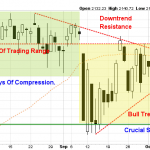January is usually a pretty strong month for stocks, suggesting that many could see large gains to start the year if historical trends hold true yet again. This is largely attributed to the “January Effect.”
What is January Effect?
January Effect is a seasonal increase in stock prices due largely to year-end tax considerations. Investors redeploy their capital to speculate on weaker performers in January after selling winners in December to create tax losses. This phenomenon pushes the stock market higher in the first month of the year.
While large caps tend to perform better, small-cap securities have historically proven their outperformance in January. According to some market experts, the January Effect actually runs from mid December through February, with the small caps continuing to outperform their large-cap cousins.

January Effect Looks More Real This Year
Small-cap stocks staged a nice comeback in the second half of 2017 on tax reform optimism and accelerating economy; the trend likely to persist in 2018 as well. This is especially true as the corporate tax cut from 35% to 21% is a big boon to small-cap stocks.
Companies on the small-cap index Russell 2000 pay a median effective tax rate of 31.9% while the larger, multi-national companies on the S&P 500 pay a median effective tax rate of 28%, according to the Thomson Reuters data. The median tax rate for the 30 mega-cap stocks on the Dow Jones Industrial Average is even low at 23.8%.
Further, growth in the U.S. economy is on a solid path buoyed by an impressive labor market, higher wages, increasing consumer spending and high consumer confidence. Notably, the economy expanded at the fastest clip in three years in best back-to-back quarters with at least 3% GDP growth and unemployment at the lowest level of 4.1% since December 2000. Americans are highly optimistic about the economy, with consumer confidence hovering near the highest level in 17 years.
Against such a backdrop, small caps seem to be the perfect choice as these are closely tied to the U.S. economy and do not have much exposure to the international market. These pint-sized stocks generate most of their revenues from the domestic market, making them great choices during an uptrend. Further, these companies are small and poised to grow higher than their already tapped out large-cap counterparts. These fundamentals will provide support to the January Effect, leading to rally in the small-cap space.












Leave A Comment